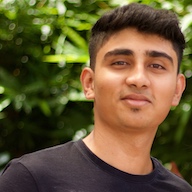
Time is easily one of the most valuable resources we have. As testament to this, there are many famous quotes that speak to the importance of time — sayings like “Time and tide wait for no man,” and “Time is money.”
We know by now that time is not the Terminator — it won’t be back. And we can’t be like Gandalf and command it to not pass.

All that said, I bet everyone reading this can relate to an incident when they wasted time and ended up stressing out as a deadline approached. And until we all can get DeLoreans that help us travel through time, we have to be careful in deciding how we chose to spend it. Some ways I’ve found that work are by incorporating productivity techniques, making lists, planning my days to take advantage of the hours when I’m most productive, and finding ways to utilize downtime during my work day.
Productivity Techniques
There are quite a few techniques that help with being productive and managing tasks, and there are some great examples on this Forbes list. One method is the Pomodoro Technique. If you are one of the people for whom deadlines are a motivator, then the Pomodoro Technique is worth checking out. This method requires you to work for 25 minutes on a task and ignore everything unrelated to it. Once those 25 minutes are up, you’re allowed to take a 5-minute break, during which you can get up and walk around, check your email, or watch some funny cat videos. After repeating this a total of four times (two hours), you’re supposed to take a longer break. There are a quite a few apps available that can help in using this technique.
The Getting Things Done method is another technique, and it’s ideal for people who like to plan more precisely. Personally, I prefer using a Kanban board. It basically divides tasks into three sections: To Do, In Progress, and Done. However, the sections of the board can be more elaborate, depending upon the team or the individual.
Writing Things Down
It’s a good idea to get into the habit of writing down tasks that need to be done, no matter how small they are. Chances are, there are some smaller things that could easily be forgotten if they haven’t been noted somewhere. I know I’ve had this happen from time to time because I’ve only had certain tasks in my head. It’s easy to forget trivial things; it’s only human. That’s why I’ve finally started keeping a list of things that I need to do.
I have made two simple lists, To Do and Done, on Trello, which is my personal version of a Kanban board for work. I prefer using this over other task management apps, because it doesn’t have too many items in front, which makes it easier for me to focus on adding and moving items to the lists. But you should use whatever app or service is most effective for you. Even something as simple a physical notepad is useful.
What also helps in being productive is to cross items off after they are complete. This is said to release dopamine, which is one of the chemicals responsible for making us feel happy.
Making the Most of Our Productive Hours
Being productive goes hand in hand with time management, and what works for me is to plan ahead for a day or two. I keep a list of things I have to do and then make room in my schedule for them in the coming days. I am usually more productive during the mornings and the evenings, so I make sure to schedule my extra errands in the afternoon, which lets me get my work done during my peak productivity hours. Luckily, at PSPDFKit we have flexible working hours, which allows me to plan my work around the time that is best for me.
For instance, if I have an errand to run at the bank the next day, I’ll consider going there in the afternoon rather than the morning. This way, I don’t end up taking time away from my best hours to go do something else. I go to the gym in the afternoon as well, not only so that I have a break from work, but also so that I have a clear mind to start wrestling with any issue that might have been giving me a hard time in the morning. Finally, if I have to be somewhere later in the evening, then I start my day early so that I can finish it in time for going out as planned.
Not all of us are most productive at the same time of day. Therefore, it’s important for each of us to determine when we are most productive and try to plan our day-to-day activities around that time in order to allow ourselves to work better and more efficiently.
Utilizing Our Downtime
Always aiming for efficiency at work is an ingrained part of our culture at PSPDFKit. Our PDF SDK is huge, and it has a significant amount of lines of code. For example, sometimes after a merge of a significant feature or clearing out the build caches, compiling of the project from scratch can take around 15-20 minutes.
All of us likely end up facing similar downtime in our work due to various reasons, and by utilizing these idle times in our day instead of using them as an excuse to not work, we can be more productive with our time.

For example, we can pick up another small task that requires our attention. We can review a pull request, or write up a reply to that email that has been patiently waiting in our inbox, or go through messages that have been piling up in our Slack channels. If you are like me — someone who likes to have open browser tabs for things that I want to read at some point in the not-too-distant future — you could click over to one of those tabs and finish reading.
Conclusion
I hope this post gave you some ideas about how incorporating a few changes and more structure in your work could impact your overall productivity and help you manage your time better. Since all of us are different, the things that worked for me might not work for you, but the trick is to try things out and see which one suits you the best and then stick to it.
Of course, it’s not always easy to form new habits or restructure your schedule, but once you start seeing the outcome of these things, it’s difficult not to continue. Though these changes may seem trivial and obvious at first, they do indeed make a difference.




